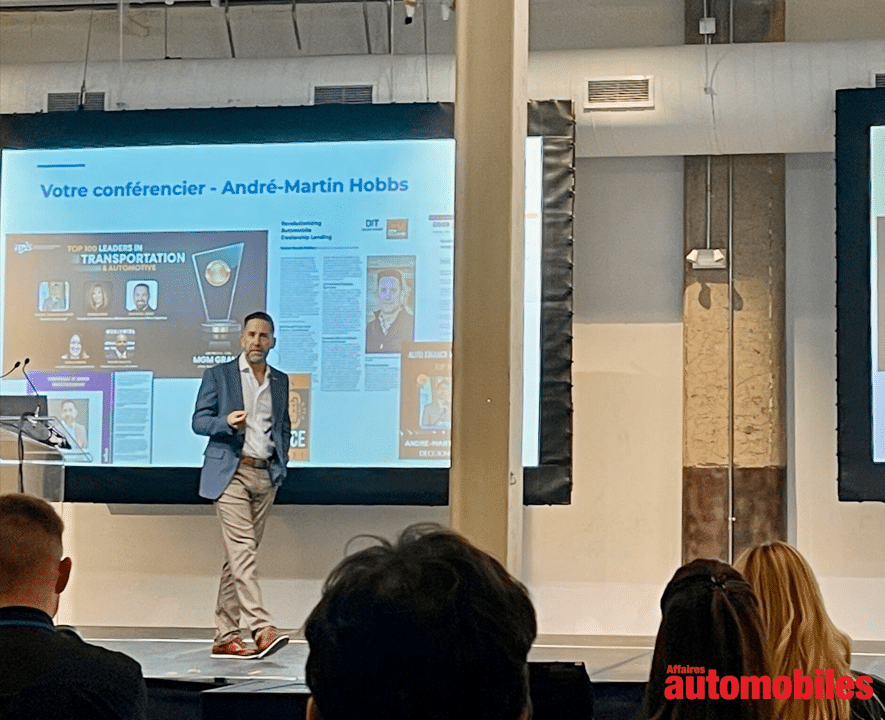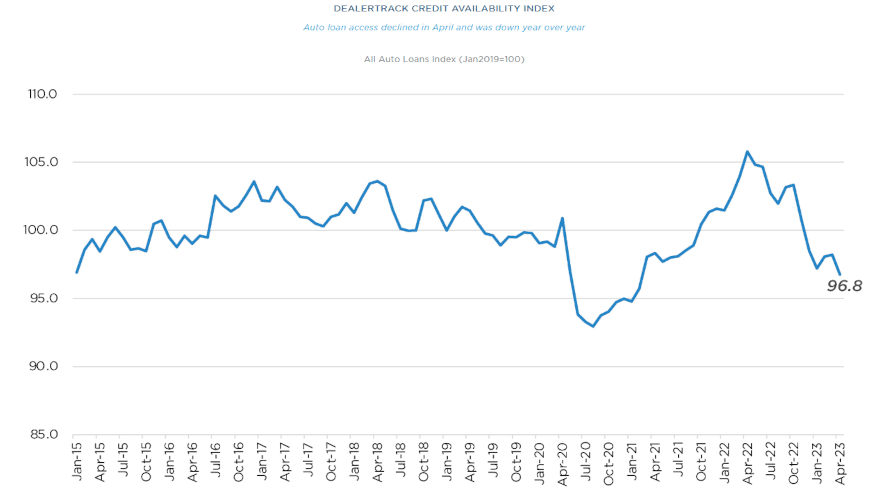How forward-looking retailers are using AI to unlock transparency, efficiency, and a better customer experience — and what to do in the next 90 days.
By André‑Martin Hobbs
Event: Conference extract from L’AGA de la CCAM (Corporation des concessionnaires d’automobiles de Montréal) — October 2
Reading time: 6–7 minutes
The moment we’re in
For nearly a decade, I’ve been building and deploying AI solutions in the automotive retail world. The past 18 months have made one thing obvious: AI is no longer experimental. It’s operational — and dealerships that adopt it today will stand out and create lasting competitive advantage.
When I spoke with CCAM members, suppliers, and partners on October 2, we explored a practical question that every retailer must answer: Is AI a threat or an opportunity? My view: it’s an opportunity if you move deliberately, assign ownership, and measure outcomes. If you wait, you risk being outpaced by dealers who don’t.
Where AI is already creating value
AI isn’t a magic wand; it’s a set of tools that, when guided by people and data, improve speed, accuracy, and customer experience. Here are proven, near‑term applications:
- Sales & BDC: AI voice/SMS agents for first response and follow‑ups, lead qualification, appointment setting, and no‑show recovery.
- Marketing: Dynamic, segmented campaigns that personalize offers, timing, and channels — with creative generation tested at scale.
- F&I: Equity mining to surface upgrade opportunities, smarter payment presentations via prequalifications (SAM Widget), and compliance‑aware scripting.
- Service: AI‑assisted visual inspections (damage, tread, wear), proactive maintenance outreach, and parts/technician scheduling optimization.
- Accounting: Automated reconciliation and exception handling that closes the books faster with fewer errors.
These are not hypotheticals. Dealers are capturing quick, measurable wins in cycle times, conversion rates, gross per unit, and CSI.
The dealership of the future (built now)
Humans and AI collaborate. People focus on empathy, judgment, and relationships; AI handles repetition, recall, and pattern recognition. The result is greater transparency, higher productivity, and an elevated customer experience — the foundations of durable profitability.
Governance first: who owns AI?
The #1 risk isn’t the technology — it’s the absence of clear ownership. Every store (and certainly every group) needs a named leader:
“As a dealer, it’s essential to appoint someone responsible for AI within your dealership — or a VP of Innovation if you’re a group.”
Ownership ensures alignment across operations, IT, and the executive team — tying value creation to risk management (data governance, security, bias, and regulation).
A practical 30‑60‑90 day plan
Days 0–30: Foundation & pilots
- Appoint the AI Lead / VP Innovation; define mandate and budget.
- Audit data flows (DMS/CRM/service/marketing) and vendor contracts. Identify quick‑win use cases per department.
- Launch two low‑risk pilots (e.g., AI BDC agent + automated reconciliation). Set baselines and success metrics.
Days 31–60: Prove & expand 4. Train teams; update SOPs to reflect AI workflows. Create a lightweight governance checklist (privacy, access control, prompts, red‑flags). 5. Add one service‑lane use case (AI visual inspection) and one revenue use case (equity mining or dynamic offers). 6. Review results weekly; tune prompts, routing, and escalation rules.
Days 61–90: Operationalize 7. Roll successful pilots to more rooftops; integrate with CRM/DMS for closed‑loop reporting. 8. Establish a monthly AI Steering review (Ops + IT + Compliance) and a vendor scorecard. 9. Publish a one‑page AI Playbook for the store: roles, handoffs, KPIs, and escalation.
Short‑term KPIs to watch
- Response & routing: First‑response < 60s; appointment set rate; show rate.
- Sales: Lead‑to‑appointment, appointment‑to‑sale, gross per unit, upgrade rate from equity mining.
- Service: Check‑in cycle time, upsell capture, RO value, return‑visit rate.
- Marketing: CTR/CPA by segment, creative test velocity, opt‑in quality.
- Finance & Ops: Days to close, reconciliation exceptions per 1,000 transactions.
- Customer: CSI/NPS trends and verbatims attributed to AI‑assisted journeys.
Tie every pilot to 2–3 of these metrics. Measure weekly; decide to scale, iterate, or stop.
Risk, compliance, and trust — non‑negotiables
Canada’s Loi 25 and broader privacy/security expectations require discipline. Build confidence by design:
- Data minimization and purpose limitation.
- Role‑based access and audit trails.
- Human‑in‑the‑loop review for sensitive steps.
- Bias monitoring and transparent explanations for automated recommendations.
- Clear opt‑ins and disclosure where appropriate.
This is where your AI Lead/VP Innovation partners with IT and legal to keep progress and protection in balance.
Will you act now—or later?
Governments are still catching up to the pace of AI. Dealers don’t have that luxury. The stores and groups that act today — with ownership, a plan, and the right partners — will separate from the pack over the next quarters.
Photo credit: Affaires Automobiles — Linda Nadon, Marie‑Ève Côté




